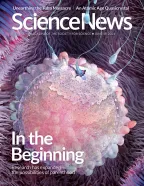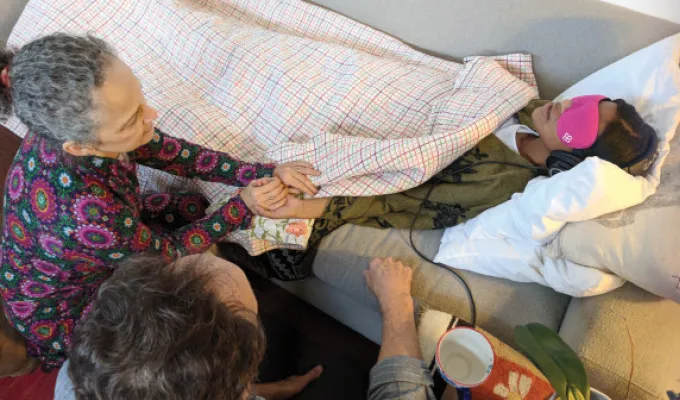Readers discuss the 1921 Tulsa race massacre, zombie fires and more
- More than 2 years ago

Rising from the ashes
Climate change might fuel more wildfires that can survive winter underground and flare up after warmer-than-normal summers, Jonathan Lambert reported in “ ‘Zombie’ fires could become common” (SN: 6/19/21, p. 7).
Reader Mike Roddy wanted to know if such fires could occur in temperate forests.
Zombie fires typically only happen in boreal forests, which grow at high latitudes between 50° N and 60° N, Lambert says. “Most temperate forests, which exist at lower latitudes in both the Northern and Southern hemispheres, lack the carbon-rich peat and soil that fuel zombie fires.”
Crystal clear
Material formed from the first atomic bomb test contains a quasicrystal, a rare type of matter that has an orderly, nonrepeating structure, Emily Conover reported in “Atomic bomb test made a quasicrystal” (SN: 6/19/21, p. 12).
Reader Lance N. Franke asked whether the quasicrystal was radioactive, given it formed during a nuclear explosion.
The researchers did not report any evidence of radioactivity within the quasicrystal itself, Conover says. But trinitite, the material in which the quasicrystal was found, is mildly radioactive — though not enough to be dangerous. “You can find within trinitite traces of plutonium, uranium and other radioactive elements that were produced or released in the explosion, but not in very large amounts,” she says.
Franke also wondered if quasicrystals could have practical uses.
Since quasicrystals are rare outside of the lab and usually extremely tiny, researchers have yet to find a practical use for them, Conover says. “Quasicrystals do not follow the same rules of symmetry as normal crystals, which means they could have properties not possible for normal crystals,” she says. Researchers are studying lab-made quasicrystals to determine if they could be useful in electronics and other technologies (SN: 1/21/17, p. 16).
Uncovering history
A century ago, an eruption of racist violence left hundreds dead and destroyed a thriving Black neighborhood in Tulsa, Okla. Now, researchers may have found a mass grave of some of the victims, Helen Thompson reported in “Tulsa reckons with the 1921 race massacre” (SN: 6/19/21, p. 22).
Reader Norman Dolph praised Thompson’s reporting, which prompted him to reflect on his upbringing. “I was born in Tulsa in 1939. My father moved to Tulsa in 1929,” Dolph wrote. Growing up, “nobody, neither my parents nor any other ‘adult’ Tulsan, went out of their way to mention this event to me until I was well into college. The event was a secret,” he wrote. “Your enlightening research and rendering of the event is a mind-opener.”
Inked up
Turkey leg bones found at an ancient Tennessee site are the oldest-known tattoo needles, Bruce Bower reported in “Ancient Native Americans turned turkey bones into tattooing tools” (SN: 6/19/21, p. 5). “How do we know the bones were used for tattooing?” reader Gary S. Flom asked. Perhaps the bones were for writing or drawing, Flom suggested.
The sharpened bones “show distinctive damage on and near their tips that has been previously observed on experimental tattooing tools,” Bower says. “Pigment residue on the turkey bones also appears several millimeters from the tips, another feature of experimental tools used to create tattoos.”
Psychedelic possibilities
Pairing MDMA, the key ingredient in the drug Ecstasy, with intensive talk therapy (below) may relieve symptoms of severe post-traumatic stress disorder, Laura Sanders reported in “Psychedelic drug eases severe PTSD” (SN: 6/19/21, p. 8). On Twitter, reader @DrT_Crit_Think rejoiced: “This discovery is huge for all veterans like my father who suffered decades of nightmares and other terrible effects of war. When science is put in the service of helping people, the possibilities are endless.”
